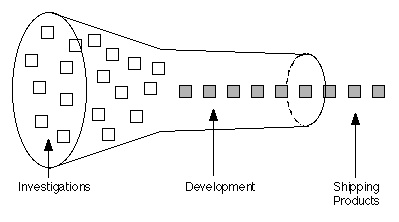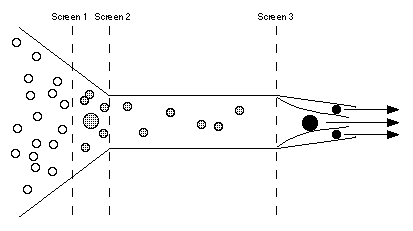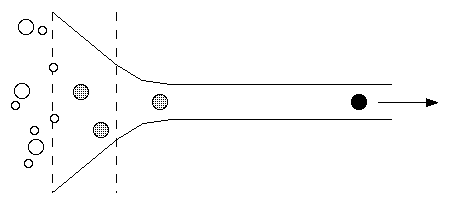Innovation Funnel

The aim of any product or process development project is to take an idea from concept to reality by converging to a specific product that can meet a market need in an economical, manufacturable form.
The overall development process starts with a broad range of inputs and gradually refines and selects from among them, creating a handful of formal development projects that can be pushed to rapid completion and introduction. This notion can be illustrated as a converging funnel (above).
In its simplest form, the development funnel provides a graphic structure for thinking about the generation and screening of alternative development options, and combining a subset of these into a product concept. A variety of different product and process ideas enter the funnel for investigation, but only a fraction become part of a full-fledged development project.
Managing the development funnel involves three very different tasks or challenges. The first is to widen the mouth of the funnel - the organisation must expand its knowledge base and access to information in order to increase the number of new product and new process ideas. The second challenge is to narrow the funnel neck - ideas generated must be screened and resources focused on the most attractive opportunities.
The goal is not just to apply limited resources to selected projects with the highest expected payoff, but to create a portfolio of projects that will meet the business objectives of the firm while enhancing the firm's strategic ability to carry out future projects. The third challenge is to ensure that the selected projects deliver on the objectives anticipated when the project was approved.
Two Dominant Models of the Development Funnel
These models are broad patterns showing the kinds of choices firms have to make.

Model 1 (above) is common in larger , technology intensive firms who rely primarily on their Research and Development group to generate ideas for technologies, products and processes.
Encouragement is given to generate many more ideas than will be applied, and these are then screened in various ways and at various stages.

Model 2 (above) is a top down model common in small, entrepreneurial start-ups, in which the firm bets on a single project. In both illustrations the circles represent new products; shading indicates the extent of development, and size the scale of the project.
References
- Wheelwright. S. C. and Clark. K. B., 1992, Revolutionizing Product Development, The Free Press, New York.
Find us on









